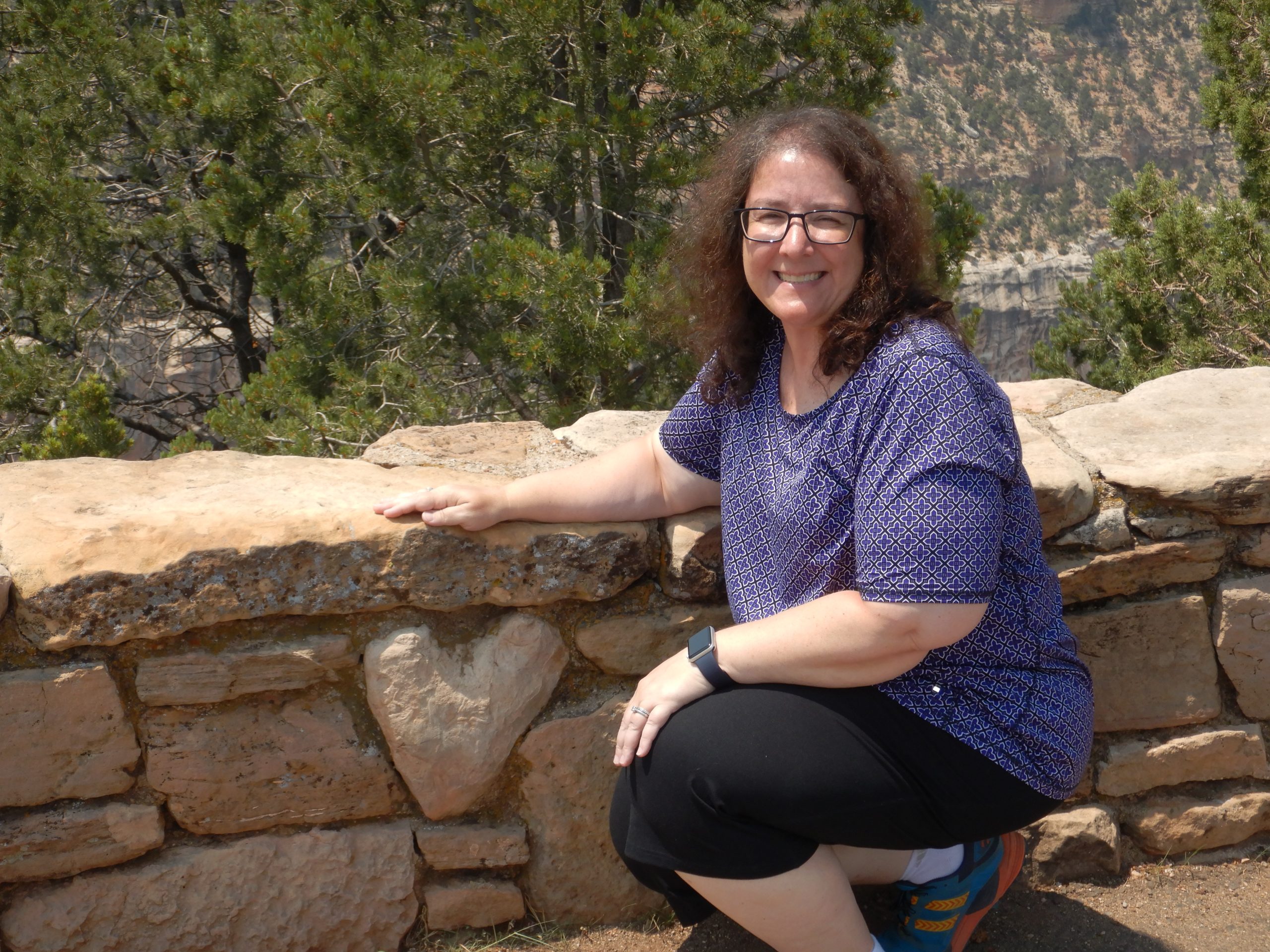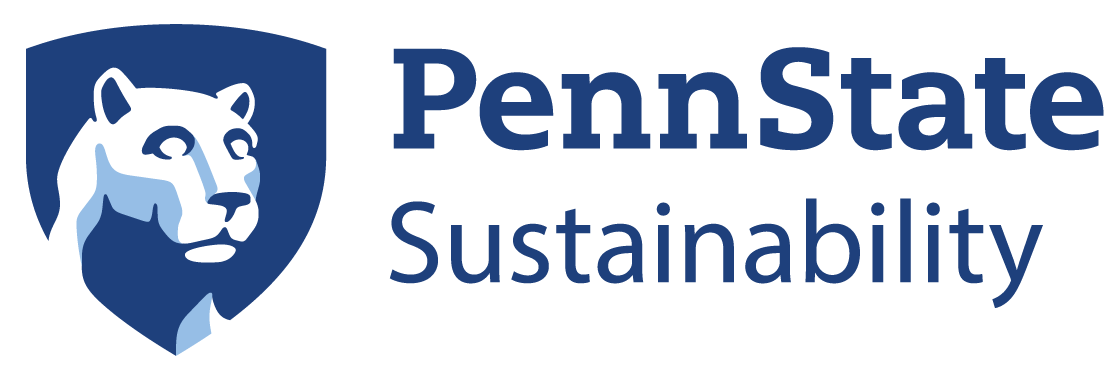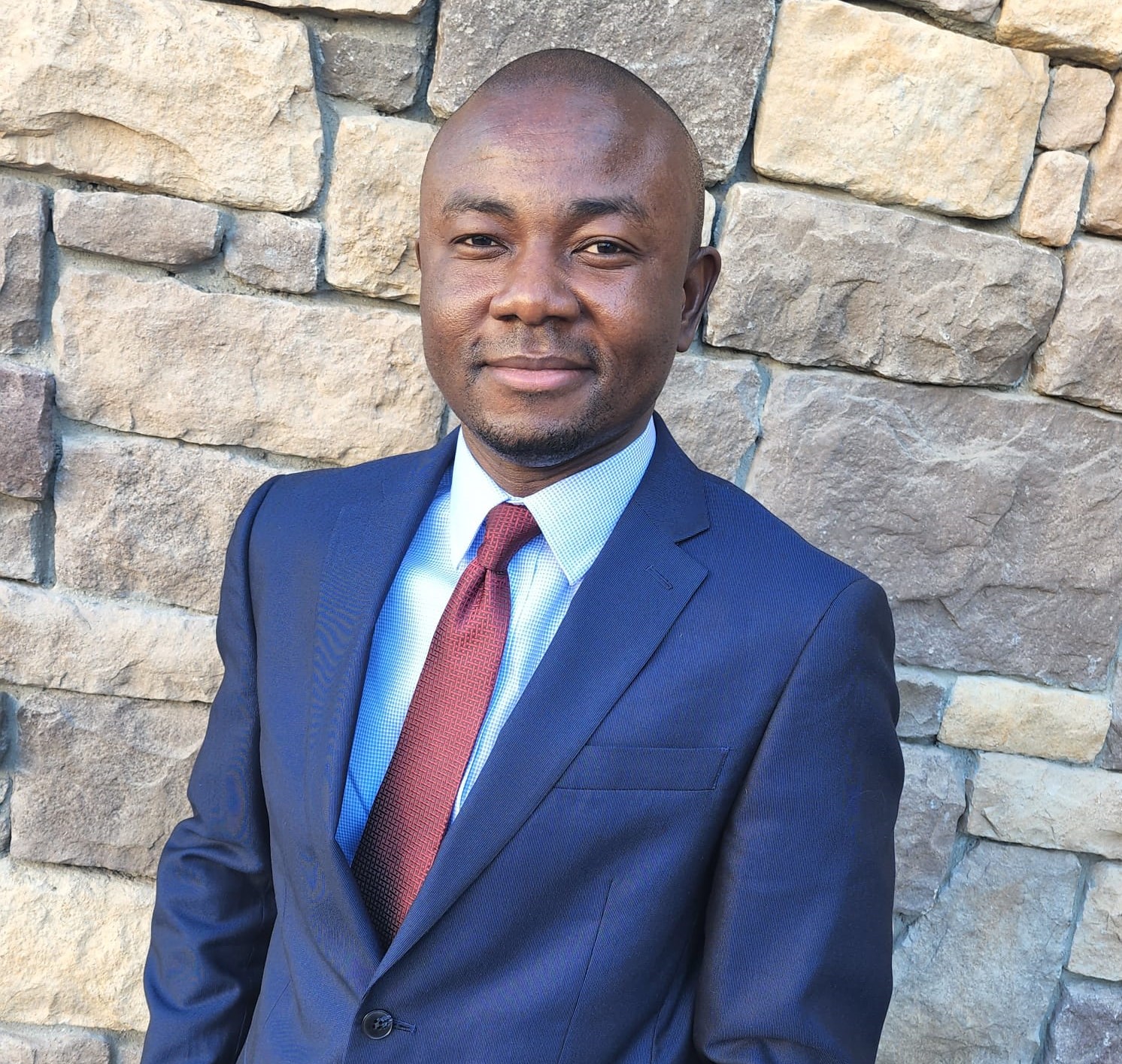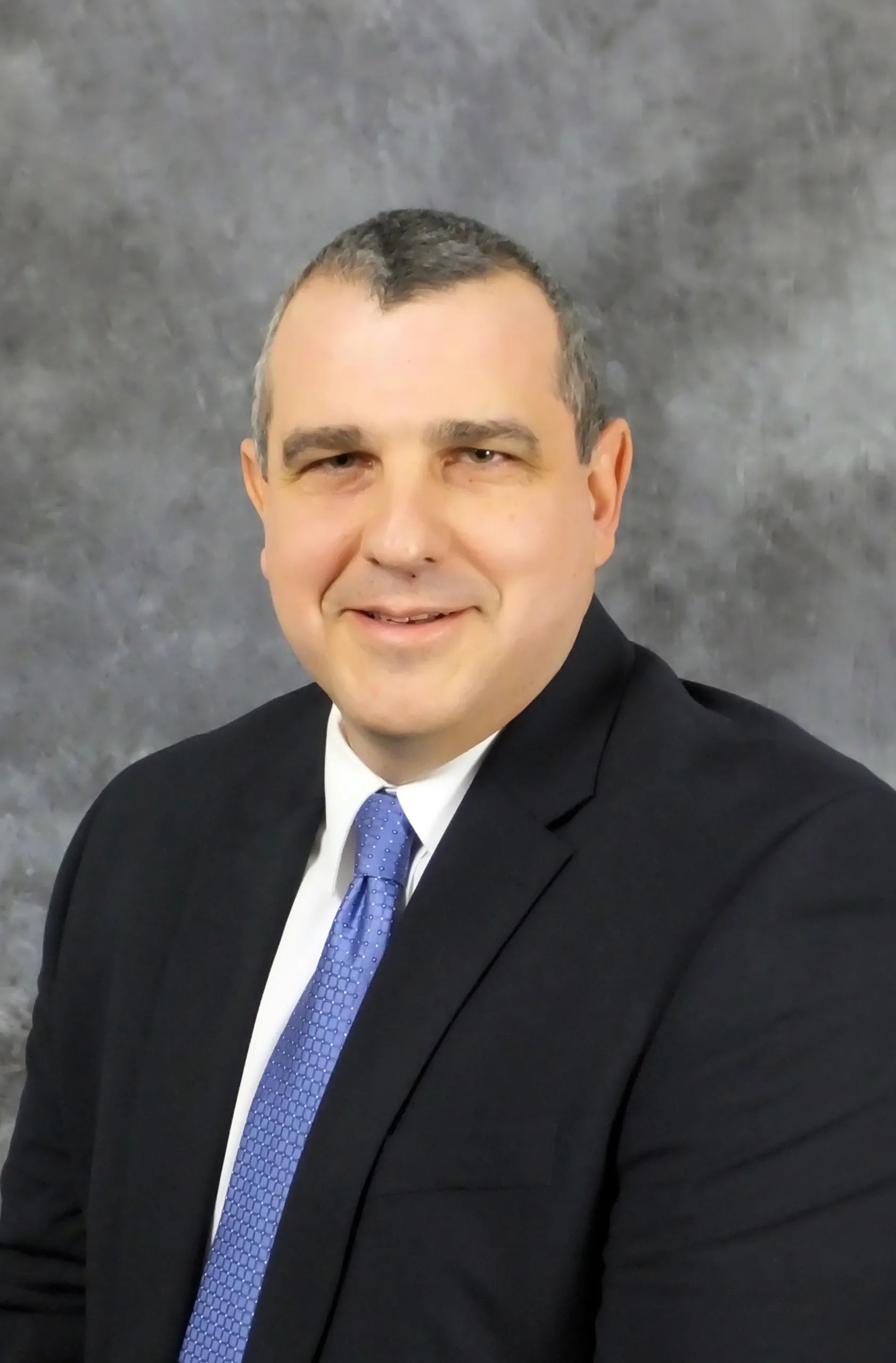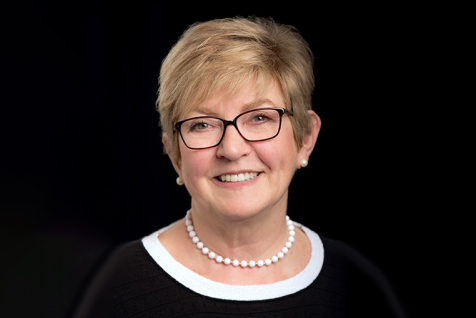Dr. Laura Guertin, Distinguished Professor of Earth Sciences
Dr. Laura Guertin is a Distinguished Professor of Earth Sciences at Penn State Brandywine. Her research focuses on teaching pedagogy, mainly on how Earth Sciences can improve teaching and reach every student in an impactful way. She has completed projects on science communication, audio-visual learning, and improving scientific literacy. She is the campus coordinator for the environmental inquiry minor and Earth sustainability certificate. She’s also received funding from the National Science Foundation, EPA, and the Society of Women Environmental Professionals.
Why is sustainability important to you?
It’s funny you ask that question; I always think, well, why would it not be important? One of the reasons it’s important to me is because I don’t think enough people understand, not just the definition of sustainability, but how it helps everyone and everything on this planet. We are one planet. We have systems like the hydrosphere, atmosphere, biosphere, lithosphere, and all of the smaller systems within, all interacting. To be able to exist as we have in the past, I think we need to understand the Earth; we need to understand these systems. Once we understand the systems, we can know, understand, and appreciate what it means to be sustainable and continue these systems as we move forward.
One concept of sustainability is bringing the circularity of nature into our social systems. I’ll use an ocean analogy here. Our planet has one ocean but many ocean basins, right? So, we say the Atlantic Ocean, the Pacific Ocean, and so on. But all ocean basins circulate one body of ocean water that goes all across the planet. That’s how I think of sustainability. It’s all these interactions, right? They’re happening across this planet, not just in the earth system but also in the human system. Air, water, land, life, all together. It’s important for me as an educator that people understand and appreciate that when they hear the term.
How did you begin incorporating sustainability into your work?
I think it’s always been there but maybe hasn’t been labeled as sustainability. I think it has in so many of our disciplines. It’s interesting, I’m going on an ocean expedition/research cruise soon, and I’ve been looking at the first expedition that happened 50 years ago that collected the first samples, but also, this particular year (2022) is the 150th anniversary of the very first ocean expedition ever. The first ocean expedition dedicated to science was a ship called the HMS Challenger. It left from England and took three years. But it’s funny because the word oceanography did not yet exist when they left. Before, people were just going out like Charles Darwin on the Beagle. But the Beagle’s mission was not a science mission. He just happened to be a naturalist onboard. The term dinosaur wasn’t invented until after the first bones were discovered. In terms of sustainability, I think so many of us had been doing work in this field, and it just hasn’t been called sustainability yet.
What past or upcoming sustainability projects do you want to highlight?
One of the things I research is not just science but also ideas. For example, geoscience education. We call this pedagogical research. How can we learn about best practices to enhance student learning? For me, that is understanding what sustainability is and getting more people to understand it. One of the things I study is the use of audio by students. How can the use of audio and the use of storytelling enhance student learning in introductory level Geoscience classes? Because most of the students in introductory earth classes are not going on to be science majors, they are residents of planet Earth. They can make decisions in their own lives about what they wear and purchase, where they go and how they get there. So, one of the things I’m interested in is how I can help my students learn and understand. And, how can audio and the idea of telling stories turn them into storytellers themselves to then further educate people?
Dr. Katherine Hayhoe has this amazing TED Talk where she says the best thing you can do about climate change is to talk about it. That’s one thing I like to do with my students. I have students create audio narratives to practice speaking and write about it in the form of a story. That’s how we’ve been raised, right? We’ve been reading stories since we were a child. We are so engaged when we hear stories. For example, one of my assignments from last semester was to create a voicemail, as if they were calling someone and that person wasn’t there to pick up the phone. And one of their voicemail assignments was centered on the 2021 UN Climate Change Conference (COP 26). My students pretended they were leaving a voicemail for someone about what happened at COP, what didn’t happen a COP, and what should happen next year. They had to identify their audience, because that’s an important part of communicating science and sustainability, right? You can’t have one message hit all audiences because then you’re not really reaching anyone. If you say, “I’m going to create this message for a general audience,” what’s a general audience? Some people are third-grade students, some are science technicians, and some are seniors with a lot of leisure time and no science background. You have to tweak your message depending on who your audience is. I ensure my students always think of who the audience is and then craft their message so that the audience will listen and understand and hopefully pass that information along.
Why is science communication important?
Science communication is something that I’m interested in. I’ve been doing a lot with audio. I have funding from the National Science Foundation to see how we can tap into audio better because it’s so accessible. My students are mostly commuter students, so they’re on the bus or in the car and tell me they’re listening to pages in Canvas as they commute. There’s so much that’s done through listening.
I’ve also been using quilts as a way to communicate as well. Everyone has a blanket story. Everyone has a good blanket at the end of their bed or something their grandmother made for them or passed down in their family. So, at the American Geophysical Union conference that happened in December this past year, I had a display of quilts. I created a collection of quilts displaying stories of the Louisiana coast, helping repair it, and coastal optimism. I wasn’t sure how the other scientists would look at it. But I had so many people coming up to me and saying, “Wow, this is great. I have a quilt, or I have this….” People were taking the time to learn the stories about each quilt. Some blankets had been around forever, and they’ve told stories for a while, but I’ve now brought that into science. It’s another way to be able to communicate, even with scientists, which I didn’t think was going to be an audience I could connect with.
Are there other ways science communication could expand into art?
Yes, there’s a journal called “Consilience,” that’s mostly a science poetry journal. They also have a journal section on science-related art with a different themes for different issues. Entropy was a theme in a previous issue. They’ve also had an entire geoscience issue.
On the research cruise I’m going on, a group wrote science haikus to describe the cores we are examining. So, non-scientists would be able to understand what each core is telling us about the earth’s history.
How do you think that science communication can improve in the future?
There are always ways to improve. We must consider other means and methods like my quilts, like people describing cores with haikus. We can pick up different tools used for communication. It doesn’t have to be a journal article or a poster at a conference.
One of the things I’m doing on the ship is a project called voicemails from the JR. I will have a person on the ship record a voicemail every day. Then I’ll use Google Earth to create placemarks for the ship’s location each day that you can click, and the voicemail will pop up. So people can hear a scientist describe what they did that day as if they were calling them up.
So I think for science communication, we need to think about expanding the toolkit that we have.
How can professors help inspire students to be passionate about sustainability, even if their major maybe doesn’t directly relate to it in their eyes?
Part of it is helping students see their place in the world. Not just where they exist but also where they can have an impact and make a difference.
I appreciate what Dr. Hayhoe gets into during her TED Talk. I encourage you to look up Katherine Heyhoe on the TED.com website. She talks about attending a Rotary Club and not knowing much about this organization. But then she saw a list of their principles on the wall, and so, on the fly, she changed her talk and connected climate change to those four principles. When you can do that, it’s a winning formula. In terms of students, we need to help them see what they can do and that there can be positive outcomes.
Several years ago, the Penn State Brandywine campus turned 50, and the voicemail assignment I gave in one of my classes was to pretend that it’s 50 years in the future. What is a voicemail you would leave someone about what this campus looks like? Students said things like, “I couldn’t find a place to plug in my electric car…” and came up with all these positive outcomes of how our institution had advanced. It was so much fun to see students think positively about their institution and how things could look in the future.
I haven’t mentioned information literacy, but that’s important to me, too, as an educator. Regarding sustainability, anyone can put anything on the internet, right? How do we make sure that it is valid and reliable? How do you teach your students about information literacy? I bring in librarians to do that because they are masters in this area. Every campus has faculty librarians. They teach my students how to review and evaluate sources and different search strategies, like how you can use the amazing Penn State Library database.
What aspects of Sustainability does your work deal with the most?
Sustainability is the simultaneous pursuit of human health and happiness, environmental quality, and economic well-being for current and future generations. Geoscience comes into that in so many ways and places. Geoscience is about natural resources and materials. Natural hazards and disasters also tie into geosciences, which impact people and their economic stability and happiness. The other part that’s not as described, but is key to geosciences, is that geoscience is very much about spatial and temporal relationships. Relationships over distance and over time. Processes in our field can take millions or billions of years. Even though humans have not been around for those timescales, sustainability is also essential beyond the human part of geologic time. The planet is around 4.6 billion years. We’re so focused on the human part because we’re humans. But if we think about the earth and the health of the planet moving forward, I think we need to move beyond just thinking about human societies.
I think the SDGs, number 17, partnerships for the goals, is the number one concept. I would pull it off the table and put it as an overarching one for all of them. Because I think you need partnerships. For responsible consumption, life on land, whatever the SDG is, it’s not just one person that will be able to do everything. Partnerships are key if you want the whole system to be successful and sustainable. In your cultural systems, in your political systems, etc.
As somebody studying geoscience, I’d like to know what young geoscientists can do to help further sustainability.
Geoscientists are very good at some basic skills, data collection analyses rate. Communicating with other scientists, we’re very good at. I think what we need to do is kind of break down some of those divisions that exist in science. We do a lot of talking to other geoscientists. It would be great if we could speak with more chemists, sociologists, or people in psychology. I think the more voices you have, the better. This also gets into the need to be more diverse as a discipline. To be sustainable, we need to bring more voices to the table. More people need to sit down so that we can hear from different communities in different cultures. We need to be more open to hearing what is important to particular communities. I think it’s hard because there’s so much work to do. And the work can be expensive and time-consuming. But that’s where, again, partnerships come in.
So, for students in geosciences, learn as much as you can. Look at what’s important to you. Why did you become a geoscience major? For many people, it’s the love of the outdoors. But there are also many people interested in geosciences that are not fans of the outdoors. I mean, I teach a lot of urban students. I’m from Philadelphia, where it’s an asphalt playground. There’s no green grass. Students don’t have a lot of experience in the outdoors. So, to keep saying liking the outdoors is what being a geoscientist is, is narrow-minded. We have to broaden that definition.
What do you hope are the impacts of your work in the future?
I hope the people I work with feel they’re making a change. You don’t always see that change right away. But I hope it generates momentum and excitement, and involvement. Environmental Quality also relates to, as I mentioned before, psychology. There’s a mental health side. We need to be centered and strong in ourselves as individuals. Personally, mental health is important because you’re more of a force when you can take a break, when you’re happy with yourself, and with your motivation. I was talking to a colleague who studies hunger and people battling food insecurity. He said you couldn’t expect people to think about sustainability when they are going hungry. Their primary focus is, “where’s my next meal coming from?” Once you satisfy that, then they can go on and do more. And many times, they want to contribute. They want to make a life not just better for themselves but better for others as well.
Imagine it’s 20 years in the future, and Penn State and our communities have become more sustainable and resilient. What does that look like to you?
My students already answered that for 50 years in the future, but what does Penn State look like 20 years in the future? We saw a little bit of a snapshot of what it could be during this pandemic, which I know has been hard in so many ways. But I think we’ve learned a lot about accessibility and inclusivity during this pandemic, which is also important for sustainability. You want to bring as many people as possible on board. So, what are the ways we need to adapt our technology? There are students who, even before the pandemic, had difficulty coming to campus for health reasons. I’ve had students in the past who were the primary caretaker for a parent who had a significant illness and couldn’t always come to class. Could we think of ways to make sure everyone can be educated? For example, I connected with you through Zoom, right? That students have complete access to Zoom is great. We can ensure that we are inclusive and accessible by creating a sustainable structure for everyone to learn. We can take some lessons from how we dealt with the pandemic. We can also deal with other problems, like inclusivity. I think the geosciences is a perfect example because field camp is required. But that means many people did not become geoscience majors because of physical limitations. How can you do field camp if a student is in a wheelchair? How can you be a geoscience major? But now there are these virtual field camps. All of a sudden, there are ways that we can be more inclusive for all students: hearing impaired and visually impaired. Thinking about how we can make geosciences more open and accessible will help us move even faster toward a more sustainable society.
